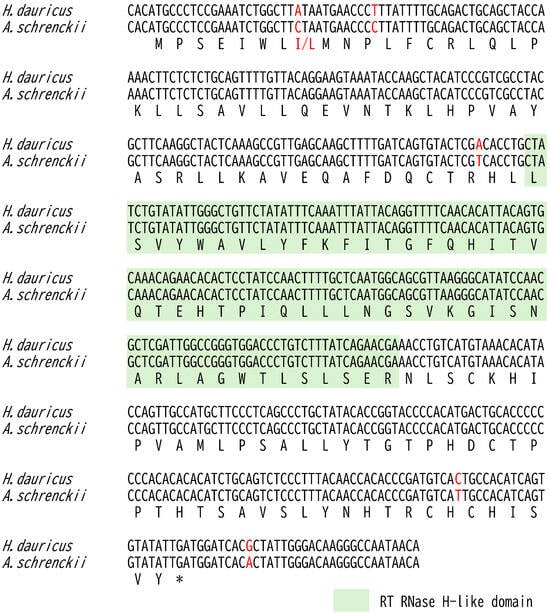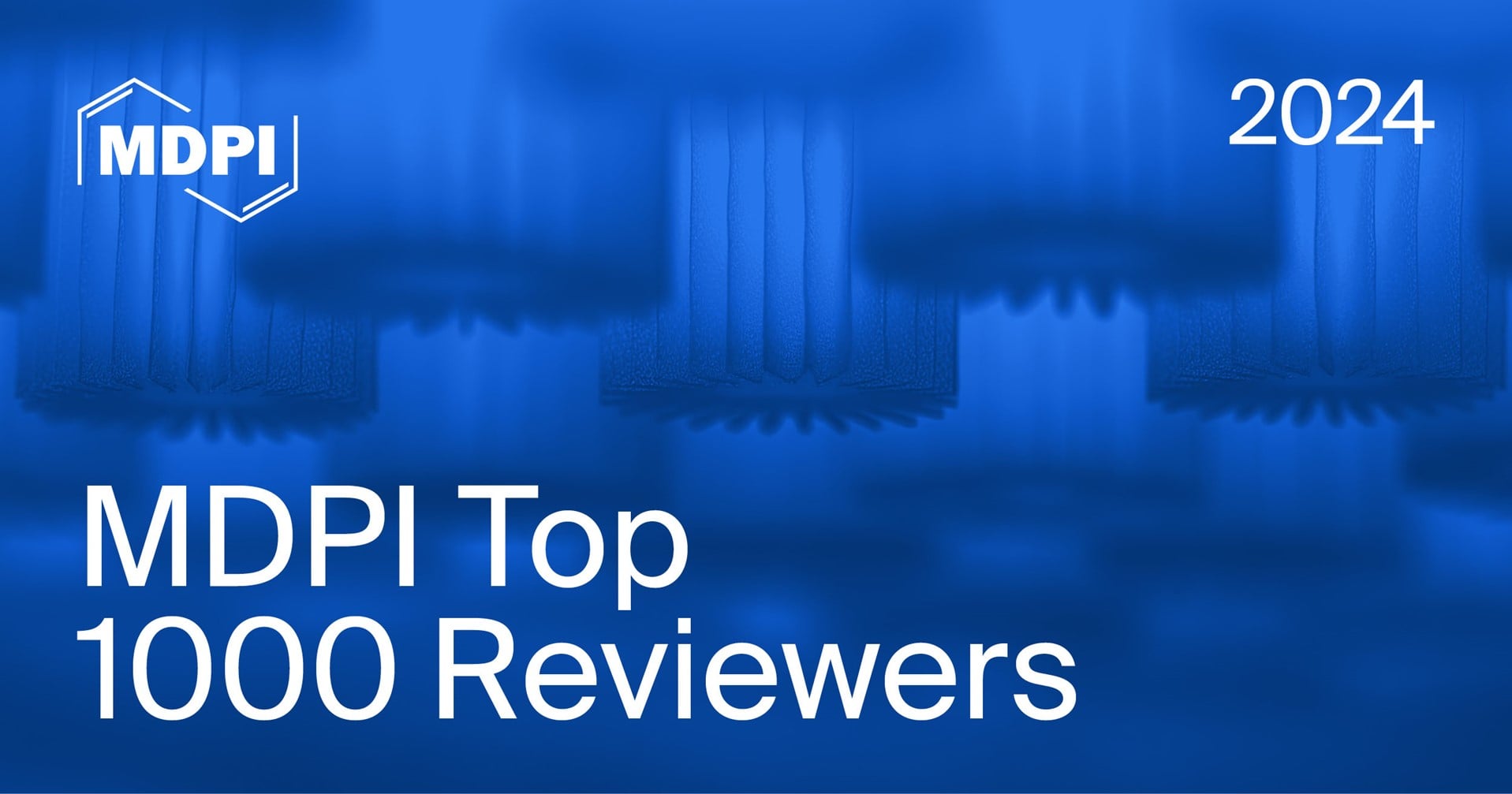-
 Impact of Stocking Density on Growth, Feeding Behavior, and Flesh Quality of Largemouth Bass (Micropterus salmoides) in Coupled Aquaponic Systems
Impact of Stocking Density on Growth, Feeding Behavior, and Flesh Quality of Largemouth Bass (Micropterus salmoides) in Coupled Aquaponic Systems -
 Bias-Adjusting Observer Species Composition Estimates of Tuna Caught by Purse-Seiners Using Port-Sampling Data: A Mixed-Effects Modeling Approach Based on Paired Well-Level Data
Bias-Adjusting Observer Species Composition Estimates of Tuna Caught by Purse-Seiners Using Port-Sampling Data: A Mixed-Effects Modeling Approach Based on Paired Well-Level Data -
 Nitrogen Budget of Yellow-Tail Lambari Farming in Monoculture and in Integrated Culture with Amazon River Prawn and Curimbata
Nitrogen Budget of Yellow-Tail Lambari Farming in Monoculture and in Integrated Culture with Amazon River Prawn and Curimbata -
 Using Citizen Science to Improve Our Understanding of Northern Shortfin Squid (Illex illecebrosus) and Longfin Inshore Squid (Doryteuthis pealeii) Ecology and Fisheries off Atlantic Canada
Using Citizen Science to Improve Our Understanding of Northern Shortfin Squid (Illex illecebrosus) and Longfin Inshore Squid (Doryteuthis pealeii) Ecology and Fisheries off Atlantic Canada -
 Physiological Effects of Suspended Solids on Venerupis philippinarum and Argopecten irradians
Physiological Effects of Suspended Solids on Venerupis philippinarum and Argopecten irradians
Journal Description
Fishes
Fishes
is an international, peer-reviewed, scientific, open access journal covering fishes and aquatic animals research, and is published monthly online by MDPI. The Iberian Society of Ichthyology (SIBIC) and Brazilian Society of Aquaculture and Aquatic Biology (Aquabio) are affiliated with Fishes and their members receive a discount on the article processing charges.
- Open Access— free for readers, with article processing charges (APC) paid by authors or their institutions.
- High Visibility: indexed within Scopus, SCIE (Web of Science), PubAg, FSTA, and other databases.
- Journal Rank: JCR - Q1 (Marine and Freshwater Biology)
- Rapid Publication: manuscripts are peer-reviewed and a first decision is provided to authors approximately 20.9 days after submission; acceptance to publication is undertaken in 2.6 days (median values for papers published in this journal in the first half of 2025).
- Recognition of Reviewers: reviewers who provide timely, thorough peer-review reports receive vouchers entitling them to a discount on the APC of their next publication in any MDPI journal, in appreciation of the work done.
- Testimonials: See what our editors and authors say about Fishes.
- Companion Journal: Aquaculture Journal
Impact Factor:
2.4 (2024);
5-Year Impact Factor:
2.4 (2024)
Latest Articles
Generation of WW Superfemale Sturgeons Through Hormonal Masculinization of ZW Females
Fishes 2025, 10(12), 618; https://doi.org/10.3390/fishes10120618 (registering DOI) - 2 Dec 2025
Abstract
In sturgeon aquaculture, all-female production is desirable due to the high value of caviar. Genetic sexing and the production of WW superfemales are important steps toward achieving this. In this study, we identified the WSR and ZSR primers for amplification of W- and
[...] Read more.
In sturgeon aquaculture, all-female production is desirable due to the high value of caviar. Genetic sexing and the production of WW superfemales are important steps toward achieving this. In this study, we identified the WSR and ZSR primers for amplification of W- and Z-specific regions, respectively. WSR primers were designed on the gene W-linked RT RNase H-like domain containing protein (rnhW). The polymerase chain reaction (PCR) bands were obtained with the WSR primer only in phenotypic female sturgeons, indicating that stable genetic sexing was achieved in most species, including those captured around Hokkaido. Moreover, rnhW showed female-specific expression in the gonads during early sex differentiation in kaluga and Amur sturgeon. ZSR primers were developed from the orofacial cleft 1 candidate gene 1 protein homolog. Clear and distinct gel band patterns for ZZ, ZW, and WW genotypes were obtained using WSR and ZSR primers, consistent with genotypic estimations by quantitative PCR. This consistency confirmed the presence of WW superfemales among offspring produced by fertilizing ZW females with ZW pseudomales masculinized using 17α-methyltestosterone. Our findings provide new insights into the mechanisms of sex determination and differentiation in sturgeons, bringing the establishment of an all-female production system within reach.
Full article
(This article belongs to the Special Issue Molecular Mechanisms of Fish Sex Differentiation and Sexual Plasticity)
►
Show Figures
Open AccessArticle
The Analysis of Transitional or Caudal Vertebrae Is Equally Suitable to Determine the Optimal Dietary Phosphorus Intake to Ensure Skeletal Health and Prevent Phosphorus Waste in Salmonid Aquaculture
by
Mursal Abdulkadir Hersi, Thomas William Kenneth Fraser, Saskia Kröckel, Per Gunnar Fjelldal and Lucia Drábiková
Fishes 2025, 10(12), 617; https://doi.org/10.3390/fishes10120617 (registering DOI) - 2 Dec 2025
Abstract
A prolonged dietary phosphorus (P) deficiency can result in reduced growth and vertebral deformities in farmed Atlantic salmon (Salmo salar). Severe deformities can impair swimming and lead to chronic stress associated with muscular fibrotic scarring. Conversely, excess dietary P contributes to
[...] Read more.
A prolonged dietary phosphorus (P) deficiency can result in reduced growth and vertebral deformities in farmed Atlantic salmon (Salmo salar). Severe deformities can impair swimming and lead to chronic stress associated with muscular fibrotic scarring. Conversely, excess dietary P contributes to farm effluents and environmental pollution. Vertebral centra ash content and mechanical strength both respond rapidly to suboptimal dietary P supply, but measuring all of salmon’s 59 vertebrae is time consuming. As such, this study assessed whether vertebrae from two commonly assessed regions (transitional and caudal) vary in their response to different dietary P levels. Atlantic salmon with an initial average weight of 1.8 kg (December 2022) were fed one of four experimental diets containing an increasing level of inorganic P (6.1–10.7 g/kg total P, 2.3–5.8 g/kg available P). Animals were distributed across 16 sea cages in a quadruplicated design. The regional differences in vertebral centra were assessed at two sampling points: in April 2023 following a slow growth period, and in July 2023 following a fast growth period. The growth of the caudal vertebrae in length surpassed the extension of the transitional vertebrae during the fast growth period. The bone mineralisation measured through vertebral centra ash and mechanical strength was however comparable between the regions, indicating that the rate of mineralisation was adjusted to the growth of the vertebrae. Only two parameters, yield point, which specifies the amount of energy that vertebra can absorb before it is permanently compressed, and toughness, a measure of stress per unit volume required to cause a fracture, showed regional differences. Considering transitional vertebrae, the estimated requirements were 4.1 g/kg available P in April and 4.4 g/kg in July, while the requirements based on caudal vertebrae were 3.7 g/kg in April and 4.6 g/kg in July. As such, both the transitional and caudal regions are equally suitable for a prompt recognition of suboptimal dietary P levels.
Full article
(This article belongs to the Special Issue Skeletal Development of Fishes: Using New Technologies to Study Bone Biology)
►▼
Show Figures

Figure 1
Open AccessArticle
Chronic Thermal Effects on Growth, Osmoregulation, and Stress Physiology in Chum Salmon (Oncorhynchus keta) Smolt
by
Balamuralikrishnan Balasubramanian, Kiyoung Kim, Junwon Kim, Doosun Hwang, Eun-Young Yun, Young Chul Kim and Jang-Won Lee
Fishes 2025, 10(12), 616; https://doi.org/10.3390/fishes10120616 (registering DOI) - 1 Dec 2025
Abstract
Chum salmon (Oncorhynchus keta) is undergoing aquaculture development in the Republic of Korea (ROK). Understanding its thermal biology, including the identification of optimal and suboptimal temperature ranges, is essential for sustainable aquaculture, particularly in a warming marine environment. In this study,
[...] Read more.
Chum salmon (Oncorhynchus keta) is undergoing aquaculture development in the Republic of Korea (ROK). Understanding its thermal biology, including the identification of optimal and suboptimal temperature ranges, is essential for sustainable aquaculture, particularly in a warming marine environment. In this study, we aimed to assess the optimal temperature range and high-temperature effects in chum salmon smolt reared at 10, 14, 18, and 22 °C for 6 weeks. Specifically, we evaluated growth performance, osmoregulatory capacity, health indicators, and endocrine and cellular stress responses after 3 and 6 weeks of exposure. After 6 weeks, the growth performance peaked at 18 °C, whereas both growth and body lipid reserve significantly declined at 22 °C despite sustained appetite. Growth was also significantly lower at 10 °C. Plasma osmolality and ion concentration did not change with increasing temperature. While hematocrit (Hct) and red blood cell count (RBCC) significantly decreased at 18 °C and 22 °C, hemoglobin concentration did not change significantly. The typical endocrine stress response was not observed; rather, cortisol levels decreased at 22 °C, whereas hepatic Heat Shock Protein (HSP)70 and HSP90 mRNA expressions were significantly upregulated at both 18 °C and 22 °C, with the markedly higher induction at 22 °C. These findings collectively indicate the onset of cellular stress at temperatures of 18 °C or higher. Despite the peak growth performance and competent osmoregulation performance at 18 °C, the concurrent induction of heat shock responses and decreases in Hct and RBCC suggest that the physiological optimum lies below 18 °C. Taken together, these findings suggest that maintaining rearing temperatures above 10 °C and below 18 °C is advisable to promote growth while minimizing cellular stress in aquaculture settings.
Full article
(This article belongs to the Special Issue Stress Physiology in Aquatic Animals)
►▼
Show Figures

Figure 1
Open AccessArticle
Insights from Fishery Discards: Age and Feeding Habits of Large-Scaled Gurnard (Lepidotrigla cavillone, Lacepède 1801) and Spiny Gurnard (Lepidotrigla dieuzeidei, Blanc & Hureau 1973) in the Gulf of Cádiz (SW Iberian Peninsula)
by
Carlos Rodríguez-García, Óscar Lago-Piñeiro, Jesica Sarmiento-Carbajal and Remedios Cabrera-Castro
Fishes 2025, 10(12), 615; https://doi.org/10.3390/fishes10120615 (registering DOI) - 1 Dec 2025
Abstract
Despite their ecological importance, discarded species with low commercial value are often overlooked in marine research. This study examined the age structure and feeding habits of the large-scaled gurnard (Lepidotrigla cavillone) and the spiny gurnard (Lepidotrigla dieuzeidei) in the
[...] Read more.
Despite their ecological importance, discarded species with low commercial value are often overlooked in marine research. This study examined the age structure and feeding habits of the large-scaled gurnard (Lepidotrigla cavillone) and the spiny gurnard (Lepidotrigla dieuzeidei) in the Gulf of Cádiz (SW Iberian Peninsula). A total of 225 specimens were collected during 19 fishing trips at depths of 15–550 m. Ages were estimated from otolith readings, and stomach contents were analysed to describe diet composition, niche breadth, and overlap. Both species showed positive allometric growth, with the most frequent age class being 5+ in L. cavillone and 5+–6+ in L. dieuzeidei. Crustaceans dominated the diet, with mysids accounting for >80% of the index of relative importance (IRI) in L. cavillone, but L. dieuzeidei displayed a broader diet including mysids (45% IRI) and decapods (32% IRI). Feeding patterns varied with time of day, depth, and size, reflecting ontogenetic and environmental influences. Levin’s index indicated stronger specialization in L. cavillone (BA = 0.090) than in L. dieuzeidei (BA = 0.208), while the Schoener index (0.575) showed moderate overlap. These findings provide the first biological insights into these discarded species in Atlantic waters, contributing to ecosystem-based fisheries management.
Full article
(This article belongs to the Section Biology and Ecology)
►▼
Show Figures
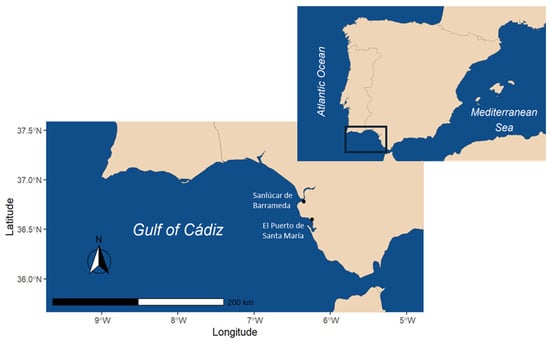
Figure 1
Open AccessReview
Purse Seine Capture of Small Pelagic Species: A Critical Review of Welfare Hazards and Mitigation Strategies Through the fair-fish Database
by
Caroline Marques Maia, Vighnesh Samel and Jenny Volstorf
Fishes 2025, 10(12), 614; https://doi.org/10.3390/fishes10120614 (registering DOI) - 29 Nov 2025
Abstract
This review examines the animal welfare implications associated with the purse seine fishing method as applied to the following small pelagic species: Atlantic herring (Clupea harengus), Peruvian anchoveta (Engraulis ringens), Atlantic chub mackerel (Scomber colias), and Atlantic
[...] Read more.
This review examines the animal welfare implications associated with the purse seine fishing method as applied to the following small pelagic species: Atlantic herring (Clupea harengus), Peruvian anchoveta (Engraulis ringens), Atlantic chub mackerel (Scomber colias), and Atlantic mackerel (Scomber scombrus). The analysis is based on synthesized data from the purse seine Method Profile, recently introduced in the catch branch of the fair-fish database—an open-access platform dedicated to compiling, evaluating, and systematically categorizing technical and/or scientific literature on aquatic animal behaviour and welfare. The Method Profile is a novel tool that outlines the commercial relevance of the respective fishing method, its target species, and general operational setup. It provides a structured overview of welfare hazards encountered across the main phases of the fishing process, including prospection, setting, capture, hauling, emersion, gear release, sorting, storage, and stunning and slaughter. In addition, this profile also addresses bycatch and discarding issues as well as environmental hazards associated with the fishing method. Identified welfare concerns in purse seining for the four small pelagic species include high stress levels resulting from intense crowding—primarily leading to hypoxia, mechanical injuries, and mortality—as well as issues related to scooping or pumping fish on board, (live) storage, and the lack of effective stunning and slaughter protocols. Furthermore, the bycatch rate of (undersized) target and diverse non-target species, as well as ghost fishing from abandoned, lost, or discarded gear, pose significant risks requiring effective mitigation. In this review, we critically evaluate factors influencing the welfare outcomes of the four pelagic species caught by purse seine and discuss potential mitigation strategies, such as operational improvements, gear modifications, and management measures.
Full article
(This article belongs to the Special Issue Fisheries Monitoring and Management)
►▼
Show Figures
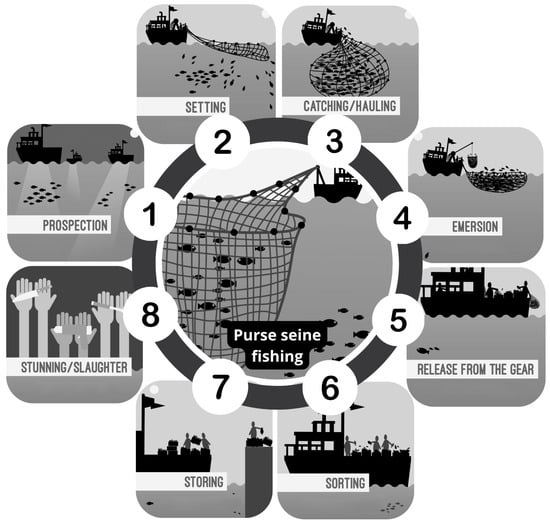
Figure 1
Open AccessArticle
DMSNet: A Dynamic Multi-Scale Feature Fusion Segmentation Network for Precise Large Yellow Croaker Recognition in Complex Underwater Conditions
by
Can Wang, Zhouming Zhang, Jianchun Shao, Naiyu Liao, Pengrong Que, Xiangzeng Kong and Tingting Zhang
Fishes 2025, 10(12), 613; https://doi.org/10.3390/fishes10120613 (registering DOI) - 28 Nov 2025
Abstract
Accurate monitoring of fish morphology and behavior is crucial to intelligent aquaculture management, especially for economically important species such as the large yellow croaker. To address challenges including turbid water, uneven lighting, and occlusions in real farming environments, this study develops DMSNet—an underwater
[...] Read more.
Accurate monitoring of fish morphology and behavior is crucial to intelligent aquaculture management, especially for economically important species such as the large yellow croaker. To address challenges including turbid water, uneven lighting, and occlusions in real farming environments, this study develops DMSNet—an underwater image segmentation model based on an enhanced TransNeXt architecture. The model incorporates three novel modules, a Convolutional Dynamic Gated Linear Unit (CDGLU), an Agentic Cross-Attention Fusion Module (ACAF), and Pooling Channel-Spatial Attention (PCSA), significantly improving feature fusion and robustness under complex conditions. To better support applications in aquaculture, a dedicated dataset of underwater large yellow croaker, called the Large Yellow Croaker Dataset (LYCD), was constructed, covering the varied clarity levels typically found in farming operations. Experimental results show that DMSNet achieves an Acc of 98.01%, an IoU of 91.73%, an F1 of 96.17%, and an inference speed of 29.25 FPS, outperforming state-of-the-art methods, particularly in turbid and low-contrast scenarios. This study presents a practical and efficient tool for non-invasive fish monitoring that is capable of accurately identifying large yellow croaker underwater in real-world aquaculture environments with complex water conditions.
Full article
(This article belongs to the Special Issue Machine Learning in Aquaculture)
►▼
Show Figures
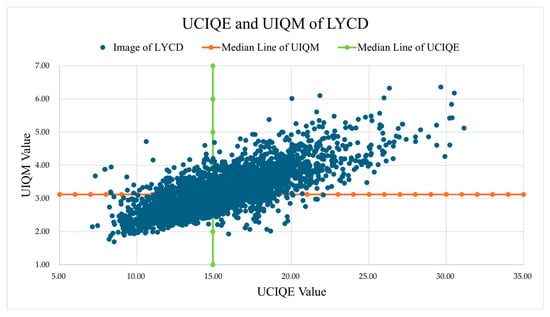
Figure 1
Open AccessArticle
Spatial and Temporal Genetic Structure of the European Squid Loligo vulgaris in the Eastern Adriatic Sea
by
Mirela Petrić, Darija Šupraha, Hana Uvanović, Igor Isajlović, Biljana Apostolska, Antonela Sovulj, Mate Šantić and Željka Trumbić
Fishes 2025, 10(12), 612; https://doi.org/10.3390/fishes10120612 (registering DOI) - 28 Nov 2025
Abstract
The European squid Loligo vulgaris inhabits the continental shelf of the North and Central Atlantic and the Mediterranean Sea, with significant socio-economic value for the associated fisheries. Globally, the stock appears to be maintained at levels close to the optimal sustainable yield, but capture
[...] Read more.
The European squid Loligo vulgaris inhabits the continental shelf of the North and Central Atlantic and the Mediterranean Sea, with significant socio-economic value for the associated fisheries. Globally, the stock appears to be maintained at levels close to the optimal sustainable yield, but capture statistics indicate high fluctuations in fisheries production, and some regions might be affected by overexploitation. In this study, we used the mitochondrial marker mtCOI to investigate temporal and spatial genetic structure and variability in the European squid in the eastern part of the Adriatic Sea and put it into context with its Mediterranean and Atlantic conspecifics using data from public databases. High haplotype and low nuclear diversity of mtCOI were detected, with no significant genetic differentiation, suggesting one panmictic homogeneous population in the North and Central Adriatic Sea. The Adriatic cluster appears to diverge from its Mediterranean–Atlantic conspecifics; however, this pattern should be considered preliminary due to the limited and uneven geographic sampling available in public databases. The current dataset lacks comprehensive coverage of several Mediterranean sub-basins, which restricts the resolution of connectivity patterns and may mask subtle population structure. Despite these limitations, our results provide an important baseline for understanding the L. vulgaris Adriatic stock and for developing joint management policies among all countries that exploit this shared resource.
Full article
(This article belongs to the Special Issue Biology and Culture of Marine Invertebrates)
►▼
Show Figures
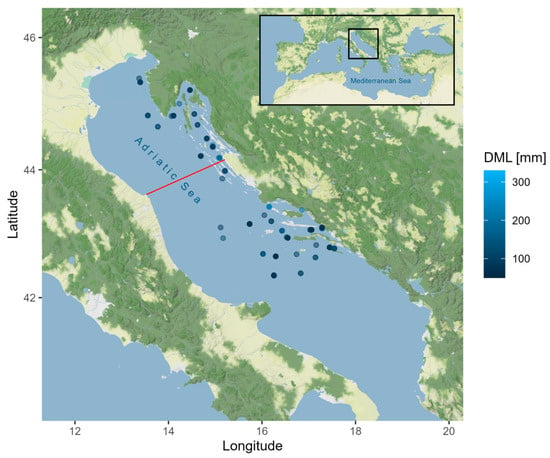
Figure 1
Open AccessArticle
Growth, Reproductive Parameters and Stock Status of Brown-Marbled Grouper Epinephelus fuscoguttatus, a Commonly Targeted Grouper in Saleh Bay, Indonesia
by
Yudi Herdiana, Peter G. Coulson, James R. Tweedley, Budy Wiryawan, Sugeng H. Wisudo and Neil R. Loneragan
Fishes 2025, 10(12), 611; https://doi.org/10.3390/fishes10120611 - 27 Nov 2025
Abstract
The brown-marbled grouper (Epinephelus fuscoguttatus), a high-value species in international trade, has experienced population declines due to intensive fishing. It is one of 12 grouper and snapper species prioritized for management in Saleh Bay, West Nusa Tenggara, Indonesia. This study analyzed
[...] Read more.
The brown-marbled grouper (Epinephelus fuscoguttatus), a high-value species in international trade, has experienced population declines due to intensive fishing. It is one of 12 grouper and snapper species prioritized for management in Saleh Bay, West Nusa Tenggara, Indonesia. This study analyzed catch data (2017–2022) and biological samples (2020–2021) to update key life history parameters, including natural mortality, von Bertalanffy growth parameters, asymptotic length, and size at maturity. Growth was estimated using an ELEFAN-optimized model applied to catch length–frequency data, while maturity was determined through macroscopic examination of gonads. The updated estimates (L50 = 488 mm for both sex; L95 = 568 mm for females and 616 mm for males) were incorporated into a length-based spawning potential ratio (SPR) assessment. Annual SPR values ranged from 0.13 to 0.28, substantially higher than previous estimates of 0.05–0.07, mainly due to the lower L50 used in this study. Despite this improvement, SPR values remain below the management target of 0.30 for groupers and snappers in Saleh Bay. Limited biological samples, particularly the scarcity of larger individuals and males, introduce uncertainty in the estimates. These findings emphasize the value of locally derived life history information and highlight the need for continued biological sampling to refine growth and reproductive parameters and support sustainable fisheries management.
Full article
(This article belongs to the Special Issue The Roles of Fishery Biology and Fish Population Dynamics in Fisheries Management—2nd Edition)
►▼
Show Figures

Figure 1
Open AccessArticle
Construction and Comparison of Different Models to Forecast Central Fishing Grounds for Trawl Fishery Targeting Argentine Shortfin Squid (Illex argentinus) in the Southwest Atlantic
by
Chen Shang, Haibin Han, Keji Jiang, Yongchuang Shi, Wei Fan, Fenghua Tang, Heng Zhang and Xuesen Cui
Fishes 2025, 10(12), 610; https://doi.org/10.3390/fishes10120610 - 27 Nov 2025
Abstract
The abundant Argentine shortfin squid resource plays a key role in the Patagonian Large Marine Ecosystem, the Polar Frontal Zone Ecosystem, and the South Atlantic Subtropical Gyre Ecosystem. In this article, we analyzed the annual and monthly changes in catch per unit effort
[...] Read more.
The abundant Argentine shortfin squid resource plays a key role in the Patagonian Large Marine Ecosystem, the Polar Frontal Zone Ecosystem, and the South Atlantic Subtropical Gyre Ecosystem. In this article, we analyzed the annual and monthly changes in catch per unit effort (CPUE) of Argentine shortfin squid with a spatial resolution of 0.25° × 0.25° and constructed three ensemble learning and two deep learning fishing grounds forecasting models using catch information and spatial–temporal and marine environmental data. The results of the study were as follows: 1. From 2016 to 2021, Argentine shortfin squid in the Southwest Atlantic experienced notable interannual fluctuations, with the resource showing an increase and then remaining stable from 2016 to 2018, a decline in 2019, and a substantial increase from 2020 to 2021. Seasonally, CPUE was low from November to January, rose significantly from February to May, and declined in June; 2. The XGBoost model had the best overall performance among the three tree models, achieving an average of 68.86% accuracy, 70.19% F1-score; 3. In the 2021 actual production data validation, the Fusion ResNet18 model achieved an average production data accuracy of 74.47%, F1-score of 73.85%; the Fusion 3DResNet18 model achieved an average production data accuracy of 81.27%, F1-score of 82.43%. This indicates that convolutional neural networks, particularly 3D versions, are more suitable than decision tree-based ensemble models for predicting Argentine shortfin squid fishing grounds. Highly accurate fishing grounds forecasts help enterprises save production costs while providing some reference for the sustainable development of fishery resources.
Full article
(This article belongs to the Special Issue Biodiversity and Spatial Distribution of Fishes, Second Edition)
►▼
Show Figures

Figure 1
Open AccessArticle
Growth, Mortality, and Stock Resilience of Common Carp (Cyprinus carpio) in the Romanian Danube: Insights into Sustainable Exploitation (2019–2024)
by
Angelica Dobre, Maria Desimira Stroe, Floricel Maricel Dima, Livia Vidu, Monica Paula Marin and Carmen Georgeta Nicolae
Fishes 2025, 10(12), 609; https://doi.org/10.3390/fishes10120609 - 27 Nov 2025
Abstract
Increasing environmental variability and fishing pressure in the Danube raise concerns about the status of common carp populations. Between 2019 and 2024, we assessed the population structure, growth, and mortality of common carp in the Romanian sector of the Danube River to evaluate
[...] Read more.
Increasing environmental variability and fishing pressure in the Danube raise concerns about the status of common carp populations. Between 2019 and 2024, we assessed the population structure, growth, and mortality of common carp in the Romanian sector of the Danube River to evaluate its status and support sustainable management. A total of 2646 specimens (8658.29 kg) were collected using fixed and floating gillnets from representative sites along the river, and morphometric data were recorded annually, including total length, weight, and sex. Length distributions showed stable recruitment in younger classes (35–44 cm) and dominance of medium-size classes (45–64 cm), with large individuals (>70 cm) peaking in 2021. Growth and mortality parameters (L∞ = 78.75–99.75 cm, K = 0.41–1.50 year−1, Z = 1.11–2.43 year−1) represent model-derived annual estimates, obtained through standard length–frequency methods, with ranges reflecting interannual variation. Sex ratios ranged from 0.77 to 0.94 (F/M), with significant male bias in 2019 and 2021, while other years were near-balanced. Comparison with Total Allowable Catch data revealed that reported catches were often below permitted limits, exceeding 50% only in 2021 and 2023. Overall, results may suggest a resilient and moderately exploited carp population in the Romanian Danube.
Full article
(This article belongs to the Special Issue The Roles of Fishery Biology and Fish Population Dynamics in Fisheries Management—2nd Edition)
►▼
Show Figures
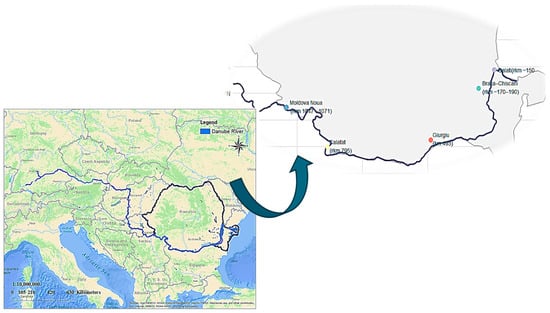
Figure 1
Open AccessCommunication
First Record of the Arabian Barracuda Sphyraena arabiansis (Sphyraenidae) from Korean Waters
by
Maeng Jin Kim, Yu Min Chae, Gi Chang Seong and Choon Bok Song
Fishes 2025, 10(12), 608; https://doi.org/10.3390/fishes10120608 (registering DOI) - 27 Nov 2025
Abstract
This study reports the first records of Sphyraena arabiansis in the Korean waters. The two specimens were collected from the coastal waters of Yeosu (1164 mm TL) and Jeju Island (1187 mm TL), Korea, on 31 July and 24 October 2025, respectively. This
[...] Read more.
This study reports the first records of Sphyraena arabiansis in the Korean waters. The two specimens were collected from the coastal waters of Yeosu (1164 mm TL) and Jeju Island (1187 mm TL), Korea, on 31 July and 24 October 2025, respectively. This species is characterized by the posterior end of the upper jaw not extending vertically below the eye, the lateral line curving anterior to the first dorsal fin, the lower part of the branchiostegal membrane being whitish, dark transverse bands on the upper side of the body crossing the lateral line but not reaching the abdomen, no black spots on the body side, 118 and 121 lateral line scales, and 14 scales below the lateral line. To confirm the accuracy of species identification, the mitochondrial DNA cytochrome c oxidase subunit I sequences were obtained from the samples and compared with those of seven sphyraenid species recorded in the NCBI GenBank database. As a result, they matched well with S. arabiansis but differed from those of S. barracuda. The new Korean name, “Jjalb-eun-ip-keun-kko-chi-go-gi,” is proposed for the species.
Full article
(This article belongs to the Section Taxonomy, Evolution, and Biogeography)
►▼
Show Figures
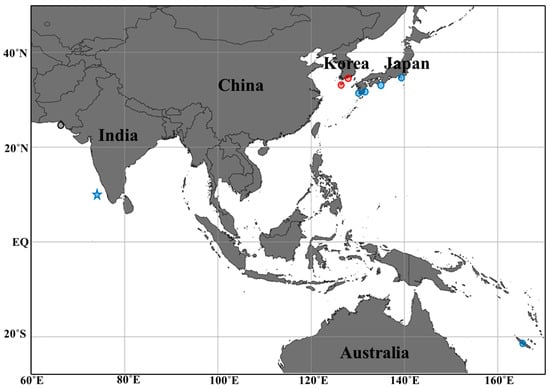
Figure 1
Open AccessArticle
Extensive Characterization of Arapaima gigas Follicle-Stimulating Hormone (ag-Fsh) Synthesized in HEK293 Cells
by
Eliana R. Lima, Thais C. A. Sevilhano, Thais C. Feitosa, João E. Oliveira, Miriam F. Suzuki, Lucas S. Torati, Paolo Bartolini and Cibele N. Peroni
Fishes 2025, 10(12), 607; https://doi.org/10.3390/fishes10120607 - 27 Nov 2025
Abstract
The cDNA sequences of the common gonadotrophic hormone α-subunit (ag-Gthα) and of the specific follicle-stimulating hormone β-subunit (ag-Fshβ) of the giant Amazonian fish Arapaima gigas have been previously isolated by our research group. A synthesis of ag-Fsh in HEK293 cells and its purification
[...] Read more.
The cDNA sequences of the common gonadotrophic hormone α-subunit (ag-Gthα) and of the specific follicle-stimulating hormone β-subunit (ag-Fshβ) of the giant Amazonian fish Arapaima gigas have been previously isolated by our research group. A synthesis of ag-Fsh in HEK293 cells and its purification and preliminary characterization were also carried out. In the present work, ag-Fsh was obtained and purified from the same host cells, and an extensive physical chemical characterization was performed via RP-HPLC, HPSEC, and MALDI-TOF-MS. Ag-Fsh, when compared to human FSH (hFSH), showed a higher hydrophobicity by RP-HPLC and a higher molecular mass (MM) via HPSEC. The same higher MM was also confirmed via MALDI-TOF-MS: 35,353 Da for ag-FSH against 31,969 Da for hFSH. Its immunological activity was also confirmed via an hFSH ELISA, in comparison with the highly purified pituitary preparation of hFSH-AFP7298A, from the National Hormone and Pituitary Program (NHPP-USA), with a clear response that was, however, 1560-fold lower when compared to the purest preparation. Finally, an in vitro bioassay, based on the stimulated release of 11-ketotestosterone (11-KT) from immature A. gigas testis, quantified ag-Fsh biological activity in comparison with human chorionic gonadotropin (hCG) and with human pituitary FSH-AFP7298A, showing a potency clearly higher than that of hCG. This suggests that injections of ag-Fsh in A. gigas and ag-Fsh cDNA gene therapy applications could be used for improving the reproductive functions of this threatened species.
Full article
(This article belongs to the Special Issue Advances in Fish Reproductive Physiology)
►▼
Show Figures

Figure 1
Open AccessArticle
Comparison of Muscle Texture Characteristics and Nutritional Composition Between Gene-Edited Intermuscular-Bone-Free Crucian Carp and Other Varieties
by
Huijie Zhou, Zhipeng Sun, Tan Zhang, Tingting Zhang, Ting Yan, Huan Xu, Mingliang Wei, Yashan Yin, Na Li, Youyi Kuang and Guangxiang Tong
Fishes 2025, 10(12), 606; https://doi.org/10.3390/fishes10120606 - 26 Nov 2025
Abstract
The intermuscular-bone-free crucian carp (Carassius auratus, WUCI), developed through CRISPR/Cas9-mediated bmp6a and bmp6b knockout, offers advantages in consumer acceptance and processing efficiency. However, its effects on muscle texture and nutritional quality have not been fully elucidated. In this study, we compared
[...] Read more.
The intermuscular-bone-free crucian carp (Carassius auratus, WUCI), developed through CRISPR/Cas9-mediated bmp6a and bmp6b knockout, offers advantages in consumer acceptance and processing efficiency. However, its effects on muscle texture and nutritional quality have not been fully elucidated. In this study, we compared the F3 generation of WUCI with its sibling wild-type crucian carp (Carassius auratus, WT), Songpu silver crucian carp (Carassius gibelio var. Songpu, SPYJ), and Fangzheng silver crucian carp (Carassius gibelio var. Fangzheng, FZYJ), focusing on muscle texture characteristics and nutritional attributes. WUCI exhibited significantly higher shear force but lower hardness than most comparison groups, with no substantial differences in muscle fiber morphology. Amino acid profiles were similar among all groups. WUCI showed lower crude fat content than WT but higher than FZYJ, and comparable levels of polyunsaturated fatty acids (PUFA), n-3 fatty acids, docosahexaenoic acid (DHA), and eicosapentaenoic acid (EPA) to WT and SPYJ. These findings indicate that the knockout of bmp6a and bmp6b does not alter muscle mass in crucian carp, supporting the potential of WUCI for commercial adoption as a gene-edited consumer-oriented fish product.
Full article
(This article belongs to the Special Issue Advances in Carp: Genetic Improvement and Biotechnology)
►▼
Show Figures
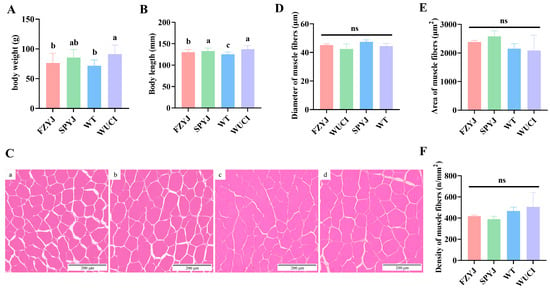
Figure 1
Open AccessArticle
Danger! Stay Alert: The Role of Skein Cells in the Evolution of the Sea Lamprey (Petromyzon marinus, Linnaeus 1758)
by
Alessio Alesci, Sebastian Marino, Stefania Fiorentino, Anthea Miller, Simon Palato, Sergio Famulari, Giorgia Pia Lombardo, Roberto Ferreira Artoni and Eugenia Rita Lauriano
Fishes 2025, 10(12), 605; https://doi.org/10.3390/fishes10120605 - 26 Nov 2025
Abstract
When it comes to predation, alarm signals enable individuals to assess risks and modulate their behavior accordingly. These signals, often chemical in aquatic environments, can be recognized across species boundaries and are typically released through injury-induced mechanisms in response to predation. While extensively
[...] Read more.
When it comes to predation, alarm signals enable individuals to assess risks and modulate their behavior accordingly. These signals, often chemical in aquatic environments, can be recognized across species boundaries and are typically released through injury-induced mechanisms in response to predation. While extensively documented in teleosts, particularly those possessing epidermal club cells, such mechanisms remain poorly understood in more basal vertebrates, such as lampreys, which possess unique epidermal structures called skein cells. The present study investigated the potential role of skein cells in the immune and alarm signaling systems of the sea lamprey (Petromyzon marinus), given their strategic location in the skin and distinctive ultrastructural characteristics, such as polarized nuclei and tonofilament-rich basal cytoplasm. Although originally misidentified as club cells, skein cells may be involved in mucus secretion and the release of compounds such as sialic acid and glycoconjugates, which provide defense against aquatic pathogens. This study employed histomorphological analysis, immunoperoxidase labeling, confocal microscopy, bioinformatics, and quantitative and statistical analysis to investigate the hypothesis that skein cells contribute to anti-predator defense via the release of alarm substances. These findings provide new insights into the evolutionary origins and functional diversity of chemical signaling in the early vertebrate.
Full article
(This article belongs to the Section Biology and Ecology)
►▼
Show Figures

Figure 1
Open AccessArticle
Isolation and Identification of Metanophrys sinensis from Shrimps (Litopenaeus vannamei) and Screening of Chinese Herbal Medicines for Its Control
by
Mingfeng Ge, Yifan Xu, Juan Feng, Zheng Liang, Hao Cui, Xinxin Jiang, Jianping Wang, Shengwei Xu and Rongrong Ma
Fishes 2025, 10(12), 604; https://doi.org/10.3390/fishes10120604 - 25 Nov 2025
Abstract
The parasitic disease scuticociliatosis poses significant economic losses to shrimp culture. In this study, an unidentified species of ciliates was discovered in Litopenaeus vannamei. Morphological and molecular analyses were conducted to identify the parasite species, while a reinfection experiment was performed to
[...] Read more.
The parasitic disease scuticociliatosis poses significant economic losses to shrimp culture. In this study, an unidentified species of ciliates was discovered in Litopenaeus vannamei. Morphological and molecular analyses were conducted to identify the parasite species, while a reinfection experiment was performed to assess its virulence towards L. vannamei. Simultaneously, Chinese herbal medicine was assessed for potential prevention and control of this pathogen. The results revealed that the SSU rDNA (93.87%), LSU rDNA (98.20%), and ITS1-5.8S-ITS2 rDNA (87.10%) genes exhibited high homology with Metanophrys sinensis, suggesting its classification within the genus Metanophry sp. The reinfection experiment demonstrated median lethal dosages of 6638 individuals/mL at 24 h and 4658 individuals/mL at 48 h for this ciliate on the host L.vannamei. In terms of drug control, we conducted a screening of 23 Chinese herbal extracts through in vivo injection trials and observed that Mume fructus extract exhibits potent biocidal activity. Specifically, the M. fructus extract solution with a final concentration of 5 mg/mL (0.5% v/v) eliminated all ciliates within 3 h. In conclusion, this study identified the ciliate parasite as Metanophrys sinensis and demonstrated its virulence to Litopenaeus vannamei. Mume fructus extract was found to effectively control the parasite, offering potential for managing scuticociliatosis in shrimp culture.
Full article
(This article belongs to the Special Issue Microbial Pathogens, Disease Control and Veterinary Drug Use in Aquaculture)
►▼
Show Figures
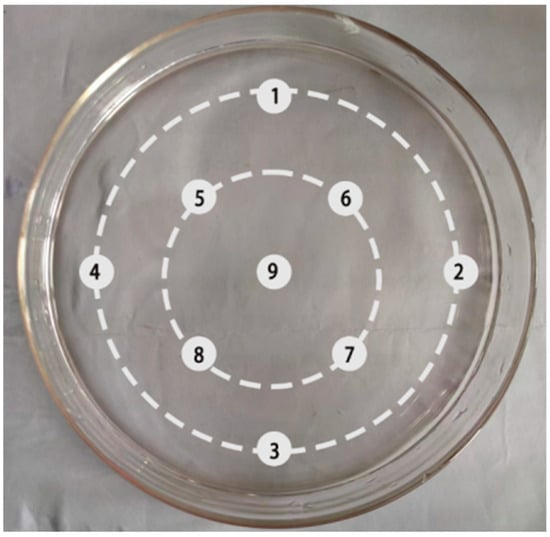
Figure 1
Open AccessArticle
Microsatellite-Based Evaluation of Genetic-Distance-Driven Crossbreeding in the Endangered Freshwater Fish Pseudopungtungia nigra
by
Kang-Rae Kim and In-Chul Bang
Fishes 2025, 10(12), 603; https://doi.org/10.3390/fishes10120603 - 25 Nov 2025
Abstract
Artificial crossbreeding is a critical strategy in the restoration of endangered freshwater fishes with small, fragmented populations, where natural spawning alone cannot reverse genetic erosion. This study examined the genetic diversity and fitness traits of crosses between genetically distant (HGD) and closely related
[...] Read more.
Artificial crossbreeding is a critical strategy in the restoration of endangered freshwater fishes with small, fragmented populations, where natural spawning alone cannot reverse genetic erosion. This study examined the genetic diversity and fitness traits of crosses between genetically distant (HGD) and closely related (LGD) broodstock individuals of Pseudopungtungia nigra, an endangered Korean freshwater fish. Using ten microsatellite loci, we evaluated genetic diversity, population structure, and early survival performance among crossbreeds and their broodstock. Both HGD and LGD progenies showed deviations from Hardy–Weinberg equilibrium and exhibited higher observed heterozygosity than expected, indicating the influence of artificial selection. The broodstock and both crossbred groups displayed bottleneck signals, while LD-based effective population size was infinite for the broodstock and HGD but finite for LGD, suggesting estimation bias because the parameter was undeterminable due to small sample size (each group, n = 28–30). STRUCTURE and DAPC analyses revealed that HGD_20 was most genetically similar to the broodstock population, while LGD and HGD_19 formed distinct clusters. Hatching rate was 1.5-fold higher in HGD compared with LGD (p < 0.05), although survival did not differ significantly (p > 0.05). These results highlight that crossbreeding based on genetic distance can enhance genetic diversity and hatching performance without causing excessive genetic divergence from the parental population, offering a practical model for the genetic management of endangered fish restoration.
Full article
(This article belongs to the Special Issue Population Genomics for Freshwater Fish Conservation: From Markers to Management)
►▼
Show Figures

Graphical abstract
Open AccessArticle
Research on Improved Near-Infrared Fish Density Classification Method Based on ResNet18
by
Xiaohong Peng, Yujie Wang and Ying Zhang
Fishes 2025, 10(12), 602; https://doi.org/10.3390/fishes10120602 - 24 Nov 2025
Abstract
Addressing the technological requirement for real-time monitoring of fish density in dim aquaculture environments, this study proposes a near-infrared (NIR) image classification method using a modified ResNet18 architecture. Initially, an NIR-Fish dataset comprising 736 high-quality annotated images (256 × 256 resolution) spanning three
[...] Read more.
Addressing the technological requirement for real-time monitoring of fish density in dim aquaculture environments, this study proposes a near-infrared (NIR) image classification method using a modified ResNet18 architecture. Initially, an NIR-Fish dataset comprising 736 high-quality annotated images (256 × 256 resolution) spanning three density scenarios (low, medium, and high density) was constructed. Contrast-Limited Adaptive Histogram Equalization (CLAHE) preprocessing was implemented with an 8 × 8 tiling strategy and clip limit = 4.0, significantly enhancing the discernibility of faint boundary features. A dual-channel attention module (DCAM) was embedded into the ResNet18 backbone, featuring a parallel architecture integrating Global Average Pooling (GAP) and Global Max Pooling (GMP). This design synergistically optimized local salient feature enhancement and global statistical feature fusion through parameter-shared fully connected layers (reduction ratio of 16:1). The experiments show that the classification accuracy of the proposed method on the independent test set is 80.57%, which is 4.34 percentage points higher than that of the original ResNet18. F1 scores for the three density levels were 0.8308 (low), 0.7674 (medium), and 0.8294 (high), respectively. Ablation studies confirmed the dual-channel design’s significant performance contribution, while the parameter-sharing mechanism effectively mitigated overfitting risks. By leveraging feature complementarity and lightweight design, this work overcomes the classification bottleneck for NIR images under low signal-to-noise conditions, providing a highly robust technical solution for intelligent aquaculture management.
Full article
(This article belongs to the Special Issue Application of Artificial Intelligence in Aquaculture)
►▼
Show Figures
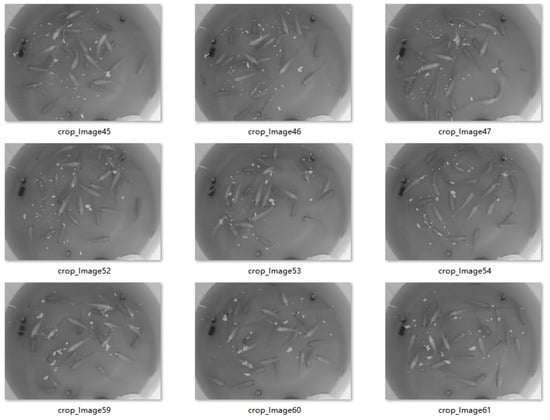
Figure 1
Open AccessArticle
Transcriptomic Profiling Reveals Immune-Related Pathway Alterations in Paralichthys olivaceus Infected with Enteromyxum leei
by
Hyobin Lee, Tae-Min Kim, Hye-Min Oh, Han-Kyu Lim and Jeong-Hyeon Cho
Fishes 2025, 10(12), 601; https://doi.org/10.3390/fishes10120601 - 24 Nov 2025
Abstract
In olive flounder (Paralichthys olivaceus) suffering from emaciation disease, the intestinal myxozoan Enteromyxum leei is considered a major causative agent. This disease causes severe economic losses in East Asian aquaculture, and even though the pathological outcomes have been well described, the
[...] Read more.
In olive flounder (Paralichthys olivaceus) suffering from emaciation disease, the intestinal myxozoan Enteromyxum leei is considered a major causative agent. This disease causes severe economic losses in East Asian aquaculture, and even though the pathological outcomes have been well described, the molecular mechanisms underlying host immune imbalance are unclear. We performed RNA sequencing of posterior intestinal tissue from infected and control fish, yielding high-quality datasets and 2666 differentially expressed genes (1589 downregulated, 1077 upregulated). Enrichment analyses revealed a significant modulation of immune processes, particularly cytokine activity, chemokine signaling, apoptosis regulation, and lymphocyte trafficking. Kyoto Encyclopedia of Genes and Genomes analysis identified six immune-related pathways that were the most affected: Toll-like receptor, NOD-like receptor, intestinal immune network for IgA production, C-type lectin receptor, RIG-I-like receptor, and cytosolic DNA sensing. Network mapping highlighted nine hub genes, including cxcl8a, pik3r1, mapk10, and itpr1b, which were shared across multiple pathways and validated by qRT-PCR. Our results demonstrate that E. leei disrupts intestinal immune homeostasis by suppressing chemokine-driven inflammation and adaptive responses while simultaneously enhancing nucleic acid-sensing and stress pathways. This dual modulation provides new insights into the intestinal immune dysregulation underlying enteromyxosis and establishes a molecular basis for future diagnostic and preventive strategies in olive flounder aquaculture.
Full article
(This article belongs to the Special Issue Molecular Mechanism of Fish Immune Response to Pathogens)
►▼
Show Figures
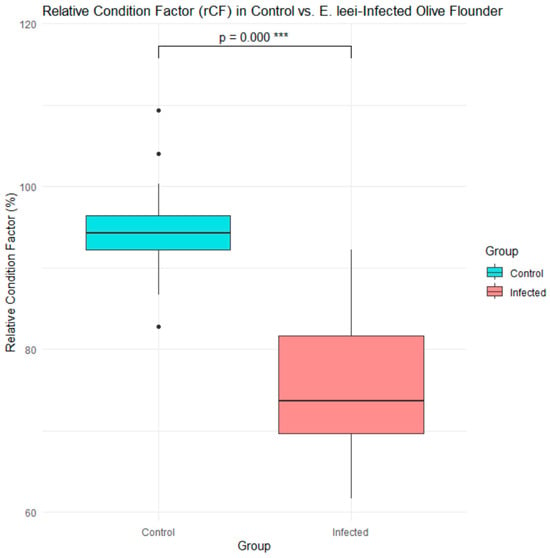
Figure 1
Open AccessArticle
Size-Dependent Salinity Tolerance and Osmotic Regulation in Juvenile Lateolabrax japonicus
by
Pengcheng Gao, Zhichang Yuan, Yanwu Ma, Yiming Li, Zongli Yao, Kai Zhou, Zhen Sun, Yuxing Wei, Hong Liu, Fan Yang, Yan Li and Qifang Lai
Fishes 2025, 10(12), 600; https://doi.org/10.3390/fishes10120600 - 23 Nov 2025
Abstract
Salinity is one of the most critical environmental factors for fish, influencing their reproduction, growth, and physiological and metabolic activities. Lateolabrax japonicus is a major commercially important marine fish that has been widely cultured in China. However, there are few reports on the
[...] Read more.
Salinity is one of the most critical environmental factors for fish, influencing their reproduction, growth, and physiological and metabolic activities. Lateolabrax japonicus is a major commercially important marine fish that has been widely cultured in China. However, there are few reports on the growth tolerance of fish juveniles of different species under various salinity conditions. In this study, we investigated the effects of acute low-salt stress on the survival, plasma osmolality, blood ion concentration, and Na+/K+-ATPase (NKA) activity in L. japonicus juveniles of two size groups. Our findings revealed no significant difference in survival rates between 5 cm and 10 cm juveniles at salinities of 0.2, 1, 3, 5, 10, 15, and 25. Plasma osmolality and blood ions exhibited a “decrease-increase-stabilization” pattern; 5 cm juveniles stabilized at 6 h at all salinities, whereas 10 cm juveniles required 48 h to stabilize at a salinity of 1, with isosmotic points of 10.91 and 11.00, respectively. Gill and kidney NKA activity followed an “increase-decrease-stabilization” pattern, with 5 cm juveniles achieving stability 12–24 h earlier than 10 cm individuals under low salinities (1, 3, 5). In conclusion, 5 cm L. japonicus juveniles exhibited superior low-salinity tolerance, accelerated osmoregulatory responses, and enhanced adaptation compared to 10 cm juveniles. These findings strongly support the prioritizing of smaller-sized L. japonicus for low-salinity aquaculture practices.
Full article
(This article belongs to the Section Physiology and Biochemistry)
►▼
Show Figures

Figure 1
Open AccessArticle
Assessing Fish Growth Changes Under an Ecosystem Regime Shift: The Approach of Linear Mixed-Effects Modeling with Application to Lake Huron Lake Trout
by
Ji X. He and Charles P. Madenjian
Fishes 2025, 10(12), 599; https://doi.org/10.3390/fishes10120599 - 22 Nov 2025
Abstract
Linear mixed-effects modeling has been used to characterize fish growth changes over time, but early studies did not fully consider the implicit relationship among the three major factors of fish age, year-class, and sampling year in model development. Our objective is to resolve
[...] Read more.
Linear mixed-effects modeling has been used to characterize fish growth changes over time, but early studies did not fully consider the implicit relationship among the three major factors of fish age, year-class, and sampling year in model development. Our objective is to resolve this issue and develop a linear mixed-effects model to clearly assess how lake trout (Salvelinus namaycush) growth has responded to the ecosystem regime shift in Lake Huron. We found that, from the late 1970s through the early 2000s, lake trout weight-at-age in northern Lake Huron had large variation with no apparent temporal trend, whereas the weight-at-age in southern Lake Huron steadily declined but remained larger than that in northern Lake Huron. The difference between northern and southern Lake Huron almost disappeared prior to the 2003 collapse of alewives, which accelerated the weight-at-age declines during the 2000s in both regions. By 2010, lake trout growth had a modest recovery and then stabilized. Our model fitted and explained variation in lake trout weight-at-age between years, regions, and recruitment origins, with the fixed age effect representing the general growth trajectory, the fixed year effect as the year-specific growth index, and the random year-class effect as the cohort-specific growth index.
Full article
(This article belongs to the Section Biology and Ecology)
►▼
Show Figures
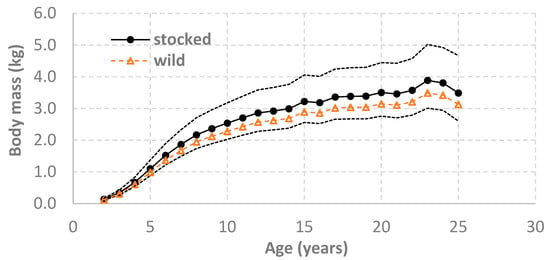
Figure 1

Journal Menu
► ▼ Journal Menu-
- Fishes Home
- Aims & Scope
- Editorial Board
- Reviewer Board
- Topical Advisory Panel
- Instructions for Authors
- Special Issues
- Topics
- Sections & Collections
- Article Processing Charge
- Indexing & Archiving
- Editor’s Choice Articles
- Most Cited & Viewed
- Journal Statistics
- Journal History
- Journal Awards
- Society Collaborations
- Conferences
- Editorial Office
Journal Browser
► ▼ Journal BrowserHighly Accessed Articles
Latest Books
E-Mail Alert
News
Topics
Topic in
Animals, Antioxidants, Fishes, Biology
Immunology and Disease Prevention and Control in Aquatic Animals
Topic Editors: Hongliang Zuo, Jiejie Sun, Linwei YangDeadline: 31 August 2026
Topic in
Fishes, Foods, Microplastics, Veterinary Sciences, Poultry, Animals, Ruminants
Micro- and Nanoplastics in Animals and Livestock Production
Topic Editors: Sonia Tassone, Beniamino T. Cenci-Goga, Samia Ben Said, Khalil AbidDeadline: 31 December 2026
Topic in
Biology, Data, Diversity, Fishes, Animals, Conservation, Hydrobiology
Intersection Between Macroecology and Data Science
Topic Editors: Paulo Branco, Gonçalo DuarteDeadline: 23 April 2027

Conferences
Special Issues
Special Issue in
Fishes
Vantage Points in the Morphology of Aquatic Organisms
Guest Editor: Peter S. JohnstonDeadline: 5 December 2025
Special Issue in
Fishes
Prebiotics, Probiotics, and Symbiotics in Fish and Shellfish Nutrition and Feed Technology
Guest Editor: Marina PaolucciDeadline: 10 December 2025
Special Issue in
Fishes
Life History and Population Dynamics of Marine Fish
Guest Editor: Peter G. CoulsonDeadline: 19 December 2025
Special Issue in
Fishes
Environmental Physiology of Aquatic Animals
Guest Editor: Weijie MuDeadline: 20 December 2025



